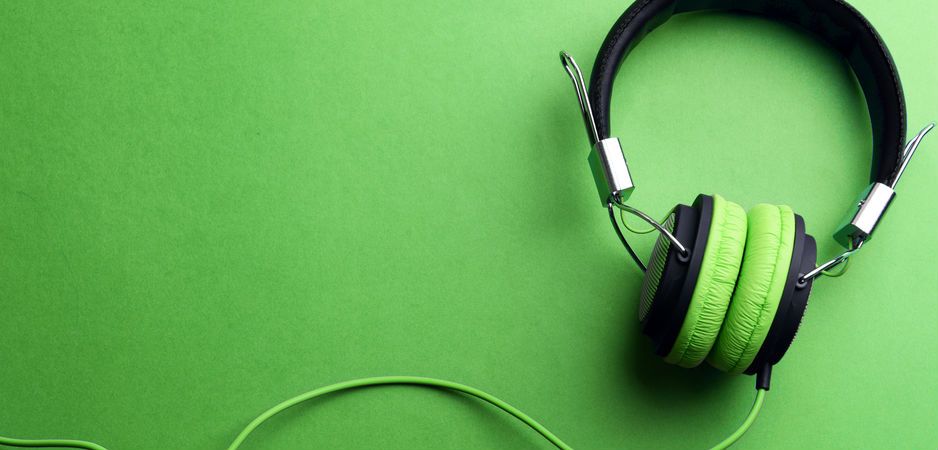One in seven people is at risk of hearing impairment.
What do you think is one of the greatest risks facing 1 billion teenagers and young adults in the world today? An uncertain future or bleak employment prospects?
The answer might surprise you. Thanks to the proliferation of personal music players via smartphones, the very real prospect of significant hearing loss poses a substantial threat to the young population.
According to the World Health Organization (WHO), approximately 1.1 billion people between the ages of 12 and 35 years—one in seven people in the world—are at a high risk of hearing impairment as a result of exposure to damaging levels of sound. This predominantly includes prolonged use of personal audio devices such as smartphones and attending entertainment venues like nightclubs, bars and sporting events. However, do-it-yourself tools, home equipment such as smoothie-makers and vacuum cleaners, and increasingly sophisticated car audio systems are not helping either.
Today, there are more than 43 million teenagers and young adults across the world who live with a disabling hearing loss. This alarming data set from the WHO debunks the conventional thinking about hearing loss being an issue of old age.
Hear the Problem
Worldwide studies have showed that untreated hearing loss is a great financial and medical burden on society. According to the Better Hearing Institute, it is a cause of higher rates of unemployment and an overall reduction in quality of life—anxiety, depression, social isolation, social paranoia, medical health, emotional stability and cognitive functioning—which may negatively impact job performance.
A number of American researchers from different consultancies and institutions churned out some interesting data for a meticulous study in the year 2000, postulating that the societal costs of severe to profound hearing loss in the United States were just shy of $300,000 per person during an individual’s life. The majority of these losses, 67%, were down to reduced work productivity. In addition, 21% of the cost was estimated to make special educational provisions for children. Furthermore, lifetime costs of hearing loss for babies and very young children exceed $1 million.
An Australian study published in 2006 found the cost of hearing loss to be 11.75 billion Australian dollars (AUD), or 1.4% of gross domestic product. There was a further estimated cost of 11.3 billion AUD for the wellbeing cost or disease burden. A report by Hear It in the same year suggested that “£13 billion is lost to the UK economy every year through unemployment linked to hearing loss.”
Enjoying the Party
Loud noise causes permanent damage to the tiny “hair cells” in the inner part of the ear, causing hearing loss. It could also be a trigger for an annoying ringing or buzzing sound in the ears known as tinnitus. Tinnitus can be a permanent and intrusive condition that is known to affect the quality of life, causing a range of symptoms including depression. Medical research is now shedding light on some more hidden side-effects of ear damage, including anxiety, stress, headaches, irritability, decreased efficiency and fatigue. This cannot be good news for the social and academic performance of students.
Interestingly, people with Type 1 diabetes—another condition now increasingly prevalent in the young population—experience more detrimental effects of loud noise than others. What makes this fact more dangerous is that as many as 820,000 adults in England alone are unaware that they have diabetes, as estimated by Diabetes Health Intelligence.
The Center for Disease Control in the US reports similar findings. Some 29 million people, or 9.3% of the population, are estimated to have diabetes. Of these, 8.1 million are thought to be unaware that they have the disease. In addition to those who already have diabetes, the center estimates that 86 million US adults—more than one in three—have pre-diabetes.
It is worth noting that there is moderate evidence that alcohol may cause hearing loss by creating a toxic environment inside the ear. Noise affects the way we perceive our taste of food and drinks. For example, a low level of music has been associated with the same alcohol tasting sweeter than with loud music.
The more worrying thing is that just as solvents and noise, mixing alcohol and loud noise is a greater risk to ears, as suggested in a 2007 research study at the University College of London. This is known as the “cocktail party effect.” Nightclubs typically have noise levels of more than 100db—this is safe for no more than 15 minutes. And if you add the alcoholic beverage to the mix, your ear’s “hair cells” are not going to enjoy the party.
The evidence is overwhelming. The WHO estimates that the issue is rather more prevalent in middle- and high-income countries where more than 50% of young people are exposed to unsafe levels of sound. In a 2008 survey of 2,711 festival-goers by the Royal National Institute for Deaf People, 84% conceded to have hearing issues after listening to loud music. A subsequent survey by the new avatar of this charity, known as Action on Hearing Loss, showed similar results.
In another recent survey commissioned by the Siemens hearing division in the US, 46% out of 500 teenagers reported experiencing ringing, buzzing or pain in their ears following activities like listening to loud music. These are potent signs of ear damage. The equally important finding was that 88% of teenagers were aware of the risks yet chose not to protect their hearing. Furthermore, 78% of them confessed that their parents and teachers have told them to lower the volume or wear protective gear.
Protecting Your Ears
So, what do you do about it? One of the first steps is for teachers and parents to educate young people about the harmful effects, and for governments to consider defining the limit of loud noise that we can be exposed to just as we warn against excessive alcohol and sugar consumption. There are guidelines for industrial workers, but no effective statute for the recreational use of sounds. For example, European Union (EU) standards for music player volume are to warn the user when the volume is above dangerous levels (around 85dB)—although they can continue to override these limits to dangerous levels, which they do as shown by a survey of teenagers.
Today, there are more than 43 million teenagers and young adults across the world who live with a disabling hearing loss.
Defining the limits is not hard. Industries have had limits for a long time. Generally speaking, this acceptable exposure depends on the level of the sound and duration of exposure. This is not rocket science: The noise dose can be calculated and displayed on music devices and in nightclubs without much effort.
There is a simple rule of thumb to minimize damage to one’s hearing: For safe listening, the music players should be used at 60% of the maximum volume and no longer than 60 minutes per day. This can be especially useful in noisy environments, such as public transport or cafes, where our instinct is to increase the volume even higher to drown out peripheral noise.
As per the EU directive mentioned above, manufacturers are obliged to put a red mark on the volume and give a written warning on the device when the volume is increased above safe levels. Remember, sound is a form of pressure, and just as water pressure of the hose is more if its end is squeezed, in theory, the same sounds can produce a larger pressure in smaller ears—for example, that of children—than bigger ears. So, the safe limit is an average rather than fit for all. Where possible, stay below the level defined safe by the music player.
Choosing headphones (possibly noise-cancelling ones) that block external noise more effectively by covering the ears is another solution. There is a research based personal noise dosimeter, which connects to the music player and lets you measure the loudness and time of music exposure via earphones. The device can then calculate how long it will be safe for you to listen to music each day. For example, you will reach 100% of sound dose in a day in a few hours on a moderate volume, whereas with maximum volume this limit could be reached in just minutes.
For youngsters, the lure of nightclubs, bars and sporting events is too hard to resist. Whenever possible, they must take breaks and use earplugs to protect their hearing. Also, car audio systems are not particularly helpful when you are on a motorway for a long journey. Sounds are more intense in confined spaces like a car and noisy tires make you pump up the volume. Investing in quieter tires is a good place to start, as well as using the 60% volume rule.
Some studies have indicated that snoring partners can be a cause of hearing issues as well. Snoring can be very loud, especially when somebody is snoring right next to your ear. Specialist earplugs are recommended if you are worried about it.
You can never be too careful about protecting your ears.
*[Note: This article was updated on March 10, 2016, at 16:18 GMT.]
The views expressed in this article are the author’s own and do not necessarily reflect Fair Observer’s editorial policy.
Photo Credit: Africa Studio / Pressmaster / Shutterstock.com
 We bring you perspectives from around the world. Help us to inform and educate. Your donation is tax-deductible. Join over 400 people to become a donor or you could choose to be a sponsor.
We bring you perspectives from around the world. Help us to inform and educate. Your donation is tax-deductible. Join over 400 people to become a donor or you could choose to be a sponsor.
Support Fair Observer
We rely on your support for our independence, diversity and quality.
For more than 10 years, Fair Observer has been free, fair and independent. No billionaire owns us, no advertisers control us. We are a reader-supported nonprofit. Unlike many other publications, we keep our content free for readers regardless of where they live or whether they can afford to pay. We have no paywalls and no ads.
In the post-truth era of fake news, echo chambers and filter bubbles, we publish a plurality of perspectives from around the world. Anyone can publish with us, but everyone goes through a rigorous editorial process. So, you get fact-checked, well-reasoned content instead of noise.
We publish 2,500+ voices from 90+ countries. We also conduct education and training programs
on subjects ranging from digital media and journalism to writing and critical thinking. This
doesn’t come cheap. Servers, editors, trainers and web developers cost
money.
Please consider supporting us on a regular basis as a recurring donor or a
sustaining member.
Will you support FO’s journalism?
We rely on your support for our independence, diversity and quality.


















